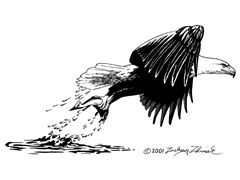Extension Wildlife & Fisheries Specialists Conferences
Date of this Version
October 2006
Abstract
Wildlife habitat is lost as the human population and land clearing for development increase in the South. Remaining habitats are fragmented and contain high numbers of invasive, exotic plants. Suburban, manicured landscapes often lack the plant diversity and complex vegetation structure important to wildlife. Generally, developers and homeowners replant cleared grounds with exotic plants that don’t provide quality wildlife habitat. Instead, individual home or property owners can mitigate wildlife habitat loss in urban areas by landscaping with native plants following proper design principles. Furthermore, many people taking action over a large area (e.g., across a neighborhood) will help connect small blocks of habitat and allow wildlife to move across an urbanized region. Wildlife faculty and students at North Carolina State University, working with other natural resource professionals, developed a program to encourage use of native plants and ecologically sound design principles to retain wildlife habitat in urbanizing landscapes. The program integrates a variety of old and new technology transfer methods including traditional county presentations, Extension pamphlets, a video, an interactive website, and a demonstration landscape.


Comments
Published in Proceedings, 11th Triennial National Wildlife & Fisheries Extension Specialists Conference, October 14-18, 2006, Big Sky, MT.